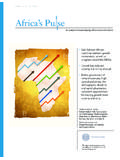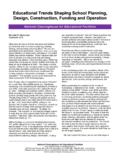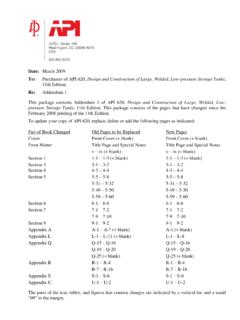Transcription of Cotehardie Construction from Extant Pieces - …
1 Cotehardie Construction from Extant Pieces Mistress Mairghead de Chesholme Mka Jacquelyne Aubuchon Uppsala gown reconstruction Very few examples of clothing from the High Middle Ages have survived to the present day. Of those garments, even fewer are available for study to the amateur costumer. Marc Carlson s website Some Clothing of the Middle Ages provides an invaluable resource for the costumer to find garments with which to make comparisons. For this examination, I have selected five garments for comparison. These garments include the Soderkoping kirtle, Herjolfnes No.
2 42, Herjolfnes No. 39, Herjolfnes No. 38, and the Uppsala gown. The Herjolfnes garments immediately precede the Cotehardie in fashion, but are not necessarily cotes. What they show is a continuity of cut and style that can arguably be carried over to application in Construction of cotehardies. For example, think of a man s dress shirt. Envision the places where the seams lie on a modern shirt. One hundred years ago, the technology was radically different, but the seams will correspond on a man s shirt from the 1800 s. Clothing Construction is constantly tweaked, skirts get longer and shorter, dresses range from fitted to volumous, but the basic lines for seams remain the same.
3 By utilizing what is known on the above five garments one can reasonably reproduce a Cotehardie using a pattern that would have been plausible at the time. Soderkoping Kirtle ~marc-carlson/ Marc Carlson s rendition of possible pattern The first garment and most degraded of the five is the Soderkoping kirtle. This garment dates from 1242 CE. It is a parti-colored garment in blue and red. The seams run laterally in front and back, it also has gores on the sides as well as the front and back. The top part of the garment from the torso area is missing.
4 Marc Carlson presents a theory as to how the garment may have been constructed. Herjolfnes No. 42 presents us with a garment consisting of front and back gores as well. This garment probably belonged to a male and dates from the mid to late 14th Century. The front and back are solid Pieces . The side gores extend to the armscye. The garment is one and a half times as wide as it is long. An interesting note to this piece is the pocket slits. They are not left in the seams where the side gores ~marc-carlson/ meet the front panel, but set in the side gore itself.
5 The hem and pocket slits are edged in cording as opposed to the rolled hem that modern stitchers would employ. Herjolfnes No 39 dates from 1420-1530 CE. This places this garment in the time period of the Cotehardie . This short sleeved dress bears many of the characteristics of No. 42 in Construction . The neckline has a small slit edged with two holes on each side for lacing. It is noted on research done by Maggie Forest that the Greenlanders used a priksom stitch which is a fine stitch closely resembling a seam done on a modern sewing machine. Herjolfnes No.
6 38 will be familiar to many in the SCA. This garment has been published in many places and is commonly referred to as a 10-gore dress . The title 10-gore is misleading as it has, similar to No. 42 and No. 39, one gore on each side and a gore in front and in back. This garment makes use of false seams and darts in the side gores giving it the appearance of having more gores than are actually utilized. Each side gore has three darts in the side for shaping that run from under the arm to the hip. As with No. 42., the pocket slits are cut at the hip into the side gore and not left in the seam.
7 The last garment utilized for this comparison is the Uppsala gown. Reportedly made for Margareta Valdemarsdotter, the 10 year old future Queen of the Kalmar Union, this dress dates from 1403-1439 CE. This garment is a four panel piece that flares on each side of the piece at the hips. Unlike the four panel popular in the SCA, there are no straight sides to the pattern Pieces . A recent reconstruction is available for view at the Uppsala Cathedral and is pictured at the beginning of this paper. By comparing archaeological data from these existing gowns, we can see several commonalities to the structure.
8 First, each quadrant of the garment flares in front, back, and at the sides. With the first four garments, the flaring is achieved with the use of gores. The Uppsala gown accomplishes the same effect without cutting a separate piece for gores. By examining the Herjolfnes gowns, we can see that much of the fitting is accomplished at the side gores. The sleeves that have survived show us a fairly large armscye. The sleeve piece itself is fitted flaring dramatically to fit the armscye, often with the utilization of a gore. We can also see a commonality in the gore widths of the skirting in that the gores are at least as wide as the body panels.
9 From this we can approximate a period patter that will achieve the look of the close fitted and supportive Cotehardie for women. Begin by taking the following measurements: height, bust, waist, hips, duck hand, sleeve length, and bent elbow. Using the Sartor System we will develop a pattern. At the back of this handout is a ~marc-carlson/ worksheet to fill out for the required measurements. Once you have the basic measurements, follow the steps to design you pattern. Begin with the basic body block. Draw a box. First from the corner of your paper, draw out half of your bust measurement.
10 Then draw a line down the back waist length plus six inches. Square out your box from the back waist length and the back waist length plus six inches. Square down from the end of the bust measurement line to complete your square. Next Measure down from your beginning point the chest length and square out to the front of the garment. From the top (shoulder) measure in of the front width and square down. From the back measure of the back width and square down. Draw a line across the body two inches below the line for the chest length. We now have the front panel rough outline, the back, and in the center a box for the armscye.






